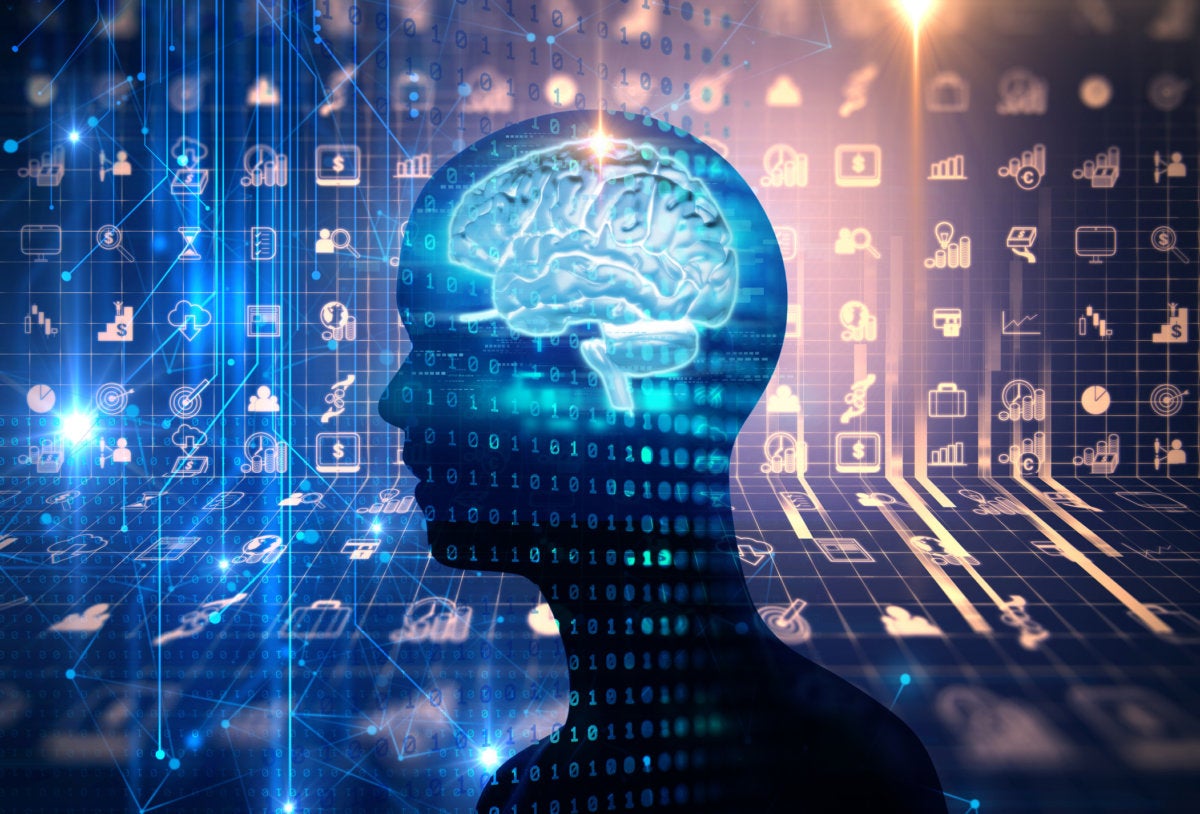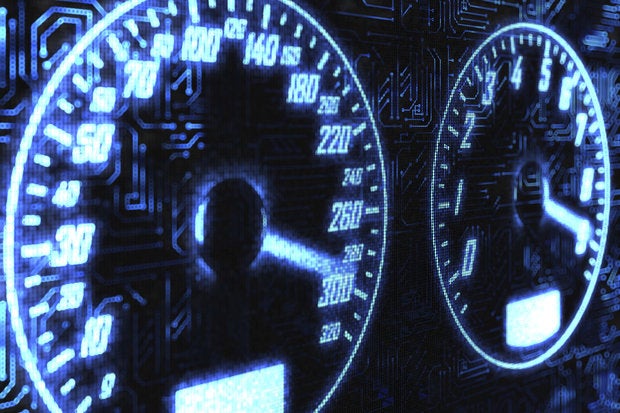
We're thinking right now about how we can create a platform or partner with folks to create a platform that offers a truly open access environment to technologists and startups and existing companies who have smart cities projects to make this platform accessible to all of them. And in that platform create the opportunity to exchange data between them to potentially have inter-operation between them. So, what I mean is, can your payment at a parking meter tell the street light that you're there and accomplish some action? Can we have trash cans interact with other pieces of street furniture that is responsive to what is happening around it? I know those are fairly conceptual, but the idea is, can we take our position and facilitate the interaction between the agencies who are focused on, as they should be, accomplishing their independent missions? ... Some other cities are now doing some things similar and there's some conversation about a city operating system that is similar to what I'm thinking about.
Journey to the Cloud: Overcoming Security Risks
As for detective and monitoring security tools, most large IaaS vendors provide virtual networking capability, which the consultancy tapped for packet capture and analysis. PaaS vendors are used differently, but most provided detailed audit logs on user logins and actions which they needed for audit purposes. Some large IaaS vendors also provided additional monitoring alarms to help with pesky things like developers accidently dropping authentication credentials into public code repositories. One major challenge for the consultancy was dealing with different cloud environments. Some cloud vendors who have multiple offerings can have different knobs and gauges for their varying services. The consultancy’s security operations team would learn how to lock down and monitor something in one service area, only to find that things worked much differently in another.
Pizza Hut customers can now pay for meals with Mastercard Qkr mobile app

“Over the past six years we have invested over £60m in transforming our restaurants and menu, and this allows us to continue to improve the service and experience we offer our guests, as well as embracing technology, which has become so central to modern culture.” Betty DeVita, chief commercial officer at Mastercard Digital Payments & Labs, said Qkr would allow Pizza Hut to accommodate more customers without having to rush them. “By removing the headache of managing bills, it will allow their staff to focus more on service,” she added. Merchants can also add delivery and takeaway options for customers through the app, as well as targeted promotions and rewards schemes. Mastercard said organisations have been using its application programming interfaces (APIs) to create specific brand experiences for customers at the table as well.
Staff awareness is the financial industry’s biggest cybersecurity concern
The report urges CISOs to prioritize employee training regardless of their reporting structure, as employees are organizations’ first line of defense and their biggest vulnerability. “Employee training should include awareness about downloading and executing unknown applications on company assets, and in accordance with corporate policies and relevant regulations, and training employees on how to report suspicious emails and attachments,” the report says. Knowing where to begin with employee training can be tough, which is why IT Governance provides an Information Security Staff Awareness E-learning Course. This course can be deployed across your organization to help anyone involved in information security understand how to stay secure. It aims to reduce the likelihood of human error by familiarizing employees with security policies and procedures, covering topics such as password security, creating backups, information security incidents, and business continuity.
How to protect Macs from malware threats

As malware threats increase in number and frequency, the next big attack could be looming just beyond the horizon. Which OS is the safest? I will give you a hint: If you believe it is Apple, that type of thinking might be what leads your Mac to be one of the next victims. Malware attacks against Apple computers have been growing exponentially and, in some cases, more than other attacks. While the threshold for these types of malware attacks has been rather low compared to its competitors, Apple's massive popularity and growing market share have shifted the focus over to its popular line of computing devices in an effort by threat actors to cash in (literally) on this growing target. Even the biggest malware attacks may have small beginnings, and threats targeting Apple devices will continue to proliferate unless users protect their devices by adhering to the following tips in conjunction with best practices for data and network security.
SaaS support challenges IT ops admins to shift gears

SaaS support doesn't introduce new problems for IT -- we've all dealt with browser plug-in support changes, internet connection issues and application upgrades. SaaS changes when these issues occur. Modern IT organizations get things done by adapting quickly, but behind the scenes, they have some notification of upgrades and changes. Testing, staff training and communications are planned out ahead of time, which dramatically lessens the disruption the changes cause to users and management. SaaS-based apps shorten the support lead time. There's also a risk that the SaaS update isn't compatible with an enterprise's setup, and there aren't viable alternatives. Prepare contingencies, and be ready to make adjustments after updates. SaaS support requires skill from IT operations. Things that once were minor systems quirks are now critical. IT staff are in a weaker position to control changes, and the safety nets in testing and preproduction don't work as they did for software hosted and managed in-house.
Is your vendor being honest about AI?

“True AI is about the future. AI says, ‘I don’t know what this is, but we’ve seen something similar so we will flag it.’ Or, ‘We’ve never seen this before, it’s an anomaly, so we will flag it.’ The key difference between rules engines and AI is where they are focused. Rules are IF-THEN decisions based on past data. AI is all about recognizing anomalies simply because they are new. We are interested when the machine says, ‘I don’t know. I haven’t seen this before.’ This is when AI is the most powerful and useful.” Laurent offered, “A key way to tell the difference between AI and rules-based engines, is that a rules-based engine will never improve on its own until someone updates the rules. AI improves its accuracy the more it is used. The more you use it the better it becomes. The adaptability of the model is what makes AI work.” Yuri strongly agreed, "Rules are basically in the past. The machine [AI] can predict the future."
TiDB: Performance-tuning a distributed NewSQL database

TiDB is an open source, hybrid transactional/analytical processing (HTAP) database, designed to support both OLTP and OLAP scenarios. One TiDB cluster has several TiDB servers, several TiKV servers, and a group of Placement Drivers (PDs), usually three or five nodes. The TiDB server is a stateless SQL layer, the TiKV server is the key-value storage layer, and each PD is a manager component with a “god view” that is responsible for storing metadata and doing load balancing. Below is the architecture of a TiDB cluster. You can find more details on each component in the official TiDB documentation. We gather a lot of metrics inside each TiDB component. These are periodically sent to Prometheus, an open source system monitoring solution. You can easily observe the behaviors of these metrics in Grafana, an open source platform for time series analytics. If you deploy the TiDB cluster using Ansible, Prometheus and Grafana will be installed by default.
The future of work: How to thrive through IT’s latest revolution
Kim Smith, venture strategist and chief innovation officer at IBM, likens such employees to the early NASA employees portrayed in the movie Hidden Figures. Back then, “computer” was a job title, not a piece of office equipment, and it was the job held by the movie’s central characters. Then NASA acquired a mainframe capable of replacing a building full of human computers “so they taught themselves Fortran,” Smith says. To be successful in the future, your company must support, encourage and enable lifelong retooling. At IBM, it means giving people access to training and allowing them to rotate in and out of jobs and departments, she explains. “They can be in one role for a period of time, then go to something completely different.” “I think expectations are going to morph,” Burns adds. “Tech professionals need to be more forward thinking. A lot of the ones I’ve seen were order takers, and we have to get away from that world. We have to help disrupt industries rather than letting our organizations be disrupted.”
Top 10 Lessons in Building a Distributed Engineering Team

One poignant question that came up early on was: how do we communicate our core values to people who are not in the office? As it turns out, instilling the company's and teams' principles in remote employees actually is no more difficult than with local ones. We decided to bring people into the office for their first week. Additionally, we get together every quarter with the whole team for working sessions and team building activities. Culture is what you do when nobody's looking; for remote employees, that means a lot of opportunities to exercise the company culture. In our experience, we've found that shared values prevail regardless of physical location. By now you might be wondering whether a distributed workforce is actually practical, and that's a valid question. How can you guarantee a culture that fosters innovation even though employees aren’t in the same room? In the past, companies often claimed that having everyone under the same roof was the only way to innovate. Nowadays, the story has changed.
Quote for the day:
"Technology makes it possible for people to gain control over everything, except over technology" -- John Tudor
No comments:
Post a Comment